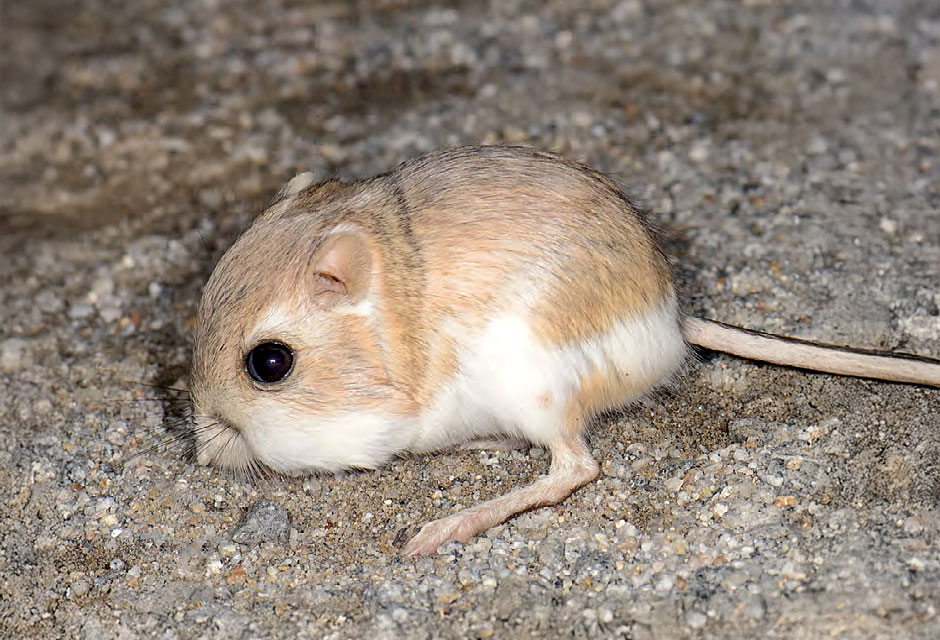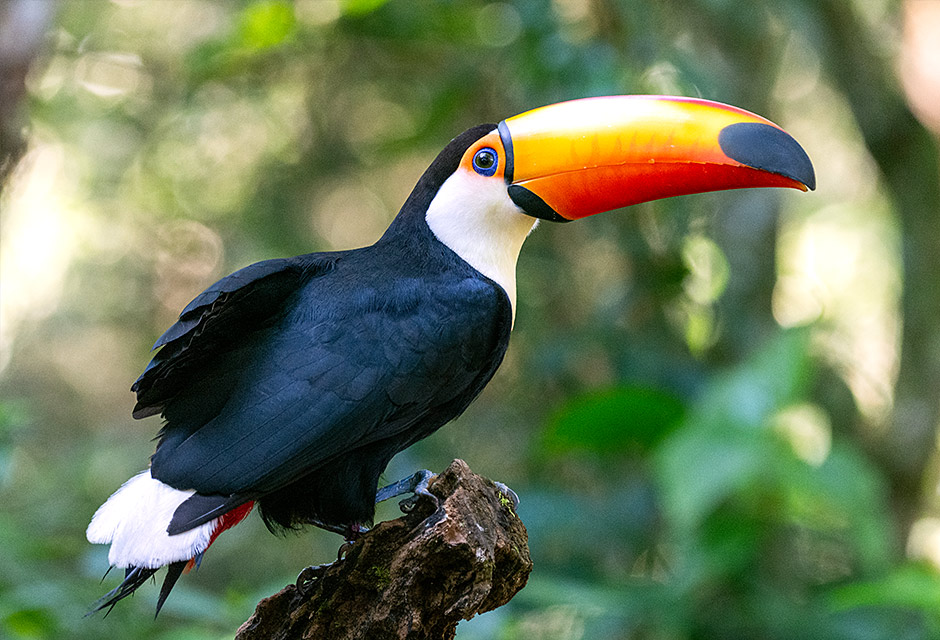
When the sweltering heat is in full force, people find ways to cool down—by drinking chilled beverages or enjoying time in the water. In regions such as Southeast Asia, where it feels like summer all year round, people cope with the heat by wearing clothes that block sunlight or by living in houses designed with good ventilation. In Korea, during July and August when heat waves and tropical nights are most intense, the use of cooling appliances causes electricity consumption to soar, sometimes even leading to temporary blackouts.
Animals, on the other hand, survive perfectly well in scorching conditions without any special equipment, relying only on their own natural abilities. Termites, for example, are exceptional builders. On the African plains, where the temperature can fluctuate between 1°C (34°F) and 40°C (104°F), they construct mounds with excellent ventilation and stable internal temperatures. Some animals are also born with bodies equipped not only for cooling but for heat dissipation and moisture control—abilities so specialized for the heat that they often amaze humans, the so-called lords of creation.
Surviving in the Desert1
1. Desert: A region where vegetation can barely grow, generally defined as receiving less than 250 millimeters of rainfall per year. Deserts are classified into tropical, mid-latitude, and cold types. In this context, “desert” refers specifically to the typical tropical desert.
Under the blazing sun that beats down on barren land where even a drop of water is hard to find, and amid rough sandstorms that blow day and night, a surprising variety of life thrives—from small rodents to large mammals, reptiles, and insects. Their secret lies in their fur.
Generally, animal fur blocks airflow and helps retain body heat. But when the fur is sparser2 than usual, it performs the opposite function—it helps dissipate heat. The Saharan silver ant, for instance, is covered with fine hairs all over its body, giving it a silver sheen like a spacesuit. Its fur is special: each hair has a triangular cross-section that reflects sunlight in both visible and infrared ranges, while also radiating absorbed heat in mid-infrared wavelengths. In other words, it functions as a natural heat-protective suit—much like the ones firefighters wear. The ant’s long legs keep its body high above the scorching ground, allowing it to move quickly across the Sahara’s burning sand.
2. When there are fewer than 300,000 hairs per square meter of skin surface.


Marshal Hedin/Wikimedia Commons/CC BY-SA 2.0/trimming
The fennec fox is a small, charming animal well known for its adorable appearance. Its most distinctive feature is its exceptionally large ears, which are much bigger than those of other fox species. The thin ears contain numerous capillaries, allowing the animal to easily release excess body heat. It also has large feet that help it move swiftly across soft desert sands, and the fur covering its footpads protects it from burns even on scorching ground.
The kangaroo rat, named for its hopping movement, avoids the daytime heat by staying in its burrow and emerges only at night to search for food. Its kidneys are remarkably efficient, producing the most concentrated urine among mammals. The amount of urine it excretes in a day is just a few drops. Thanks to this adaptation, the kangaroo rat can obtain all the moisture it needs from dry seeds alone.
The spadefoot toad spends most of the year underground. How can a toad—an animal that usually lives in moist, shaded places—survive in the desert’s dryness and heat? The secret lies in timing. Even deserts receive rain on rare occasions. True to its name, the spadefoot toad digs into the ground with its spade-shaped feet and remains in a cool, damp burrow for months. When rain finally falls, it emerges to breed in temporary rainwater pools. The fertilized eggs hatch within two days, and in just two to four weeks, the tadpoles become young toads. They live above ground only briefly before returning to their burrows to wait once again for rain—sometimes for nearly eleven months.
The Secret of the Camel, the Ship of the Desert
So perfectly adapted to its environment that it can be called the culmination of all desert survival methods, every part of the camel’s body is optimized for life in extreme heat. Despite being one of the largest desert animals and seemingly requiring a great deal of energy, the camel can travel more than 300 kilometers (186 miles) without drinking a single drop of water. For this reason, it is affectionately known as the “ship of the desert.”

In midsummer, desert sand temperatures can soar to 60–70°C (140–158°F), but thanks to its long legs, the heat that reaches the camel’s body is about 10 degrees lower than at ground level. Its thick fur, covering the entire body, reflects sunlight and shields it from the scorching heat that radiates from the sand. The broad bones of its head protect its eyes from the glare of the sun, while its long, thick eyelashes and nostrils that can open and close freely keep out the sand during fierce sandstorms. The camel’s iconic hump contains fat, which it can break down to produce both energy and water when needed.
Camels are also equipped with extraordinary mechanisms for conserving water. To minimize water loss through the skin and respiration, they can regulate their body temperature freely. As a result, a camel’s body temperature fluctuates from about 41°C (105.8°F) during the day to 34°C (93.2°F) at night—a range that would be fatal to humans, causing high fever or hypothermia. Moreover, their red blood cells are elongated and oval-shaped, allowing them to absorb large amounts of water without bursting even under the high osmotic pressure that occurs after drinking. A camel can drink 100 liters of water in just ten minutes and up to 200 liters in a single day, storing it not only in the bloodstream but also in body tissues, without wasting a drop.
Even its waste shows remarkable efficiency; its urine is highly concentrated with urea, and its feces contain so little moisture that they can even be used as fuel. Every part of the camel’s body stands as a testament to divine design, perfectly adapted for life in the desert.
Surviving in the Tropical Rainforest and Savanna
Unlike the desert, where annual rainfall is scarce, the tropical rainforest receives abundant rain throughout the year, and the tropical savanna alternates distinctly between rainy and dry seasons. In both regions, daytime temperatures often exceed 40°C (104°F). Yet the tropical rainforest is home to 40 percent of the world’s known animal species, while the savanna—where countless herbivores and carnivores coexist—is often called the “kingdom of animals.” How do these creatures withstand such intense heat?
The elephant, the largest and heaviest land animal, faces a particular challenge in cooling its massive body. Most animals can release heat effectively through their skin, but the elephant’s enormous size compared with its skin surface area makes that difficult. Its solution lies in its ears. Thin blood vessels spread like a web across the broad ear surfaces, radiating heat as warm blood passes through. The hotter the body temperature, the more blood flows to the ears, and the more frequently the elephant flaps them—like built-in fans. Even the sparse hairs covering its skin help to release heat efficiently.


For birds living in hot climates, maintaining a safe body temperature is also essential. Though smaller than elephants, birds have high metabolism and body temperature because they fly continuously. However, their feathers make it hard for heat to escape, and panting through the mouth causes significant water loss. The surprising secret to how birds cool down lies in their beaks. The beak, one of the few body parts not covered in feathers, contains a dense network of blood vessels and continues to grow throughout the bird’s life. Its outer layer is made of chitin, which prevents moisture loss—making it ideal as a natural radiator. The toucan, a symbol of the rainforest, can release up to 60 percent of its body heat through its enormous beak. If elephants release heat through their ears, birds do so through their beaks.
Just as human skin tones differ by environment, the stripes of zebras vary by habitat. Recent studies have revealed that temperature differences play a major role. Zebras living in hotter regions of the savanna have larger and darker stripes that contrast sharply with the white ones. The black stripes absorb more solar heat, creating a temperature difference between the two colors. Researchers found that the surface temperature of the black areas measured about 37°C (99°F), while the white areas were around 31°C (88°F)—a difference of six degrees by Celsius (11 degrees by Fahrenheit). This temperature contrast generates tiny air currents across the zebra’s body, effectively producing a cooling breeze. In other words, the zebra’s stripes serve as its own natural fan.
Cool and Sweet ‘Summer Sleep’
Just as some animals hibernate in winter to survive the cold, others enter aestivation—a state of dormancy—to escape the deadly heat of summer. The fat-tailed dwarf lemur and the mouse lemur of Madagascar, for instance, gain weight equal to about 40 percent of their body mass before the dry season, much like bears before hibernation. But unlike bears, they store fat not in their bellies but in their tails, making it look as though they are carrying little sausages behind them.
Desert snails also aestivate during the hot, dry months, then awaken and become active again when the rains return. Other animals that practice aestivation include the lowland streaked tenrec—an insect-eating mammal that looks like a hedgehog wearing a yellow cap—along with crocodiles, frogs, and salamanders. Some insects do the same, the most familiar being ladybugs. The reason ladybugs are seldom seen in midsummer is because they hide among plant roots and spend the season fast asleep.
Even in the sea, there are creatures that slumber through the heat. When the water temperature rises above 17°C (62.6°F), sand lances burrow into the sandy seabed, leaving only their heads exposed, and sleep for four to five months. Sea cucumbers, when ocean temperatures climb, move to deeper waters or retreat into undersea caves, waiting for the summer to pass in quiet rest.
Countless animals today continue to endure the heat in their own unique ways—and from them, humans have learned how to win the battle against high temperatures.
Recently, “blue technology,” which takes inspiration from nature, has drawn growing attention. The Eastgate Centre in Zimbabwe, modeled after termite mounds, maintains an indoor temperature of around 24°C (75°F) all year without air conditioning—a brilliant example of sustainable cooling modeled on creation itself. Though modern science and technology advance daily, the wisest methods for escaping the heat without harming the environment were already present in nature, created by the hand of God.
“But ask the animals, and they will teach you, or the birds in the sky, and they will tell you; or speak to the earth, and it will teach you, or let the fish in the sea inform you. Which of all these does not know that the hand of the LORD has done this?” Job 12:7–9